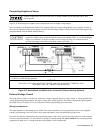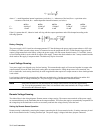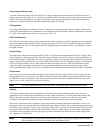
User Connections 64
Stability
Using remote sensing under unusual combinations of load-lead lengths and large load capacitances may cause your
application to form a low-pass filter that becomes part of the voltage feedback loop. The extra phase shift created by this
filter can degrade the supply's stability and result in poor transient response. In severe cases, this may cause output
oscillations. To minimize this possibility, keep the load leads as short as possible and tie wrap them together.
In most cases, following the above guidelines will prevent problems associated with load lead inductance. This leaves load
load-lead resistance and load capacitance as the major source of reduced stability. Further improvement to the stability of
the supply may be obtained by keeping the load capacitance as small as possible and by decreasing the load-lead resistance
by using larger diameter wires. However, if heavy gauge wire (≥ AWG 10) is used, conditions may arise where the
load-lead inductance and load capacitance can form an undamped filter. This can actually reduce the damping in the system
and create a destabilizing phase response.
Note If you need help in solving a stability problem with any Series 664xA or 665xA power supply contact an
Agilent Service Engineer through your local Agilent Sales and Support Offices.
Connecting One Supply to the Load
Figure 4-3b and Figure 4-3c show how to connect a single power supply to one load and to multiple loads.
Load Connection Load Analog Connector
A Set switch for local or optional remote sensing
B Connect for remote sensing (optional)
Figure 4-3b. Series 664xA and 665xA Single Load Connection


















